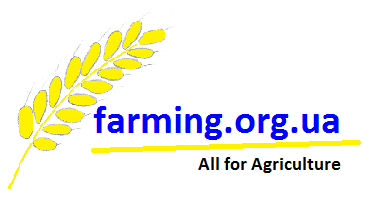|
Climate change and precision agriculture

Dr. Oleksii Orlov,
PhD in Agriculture
Climate change
has already affected every farmer on the Planet. The losses
of farmers and food producers from drought and hurricanes are increasing every
year.
And they
have no choice but to introduce new technologies and innovations that can
optimize production costs and reduce the negative impact on the ecosystem.
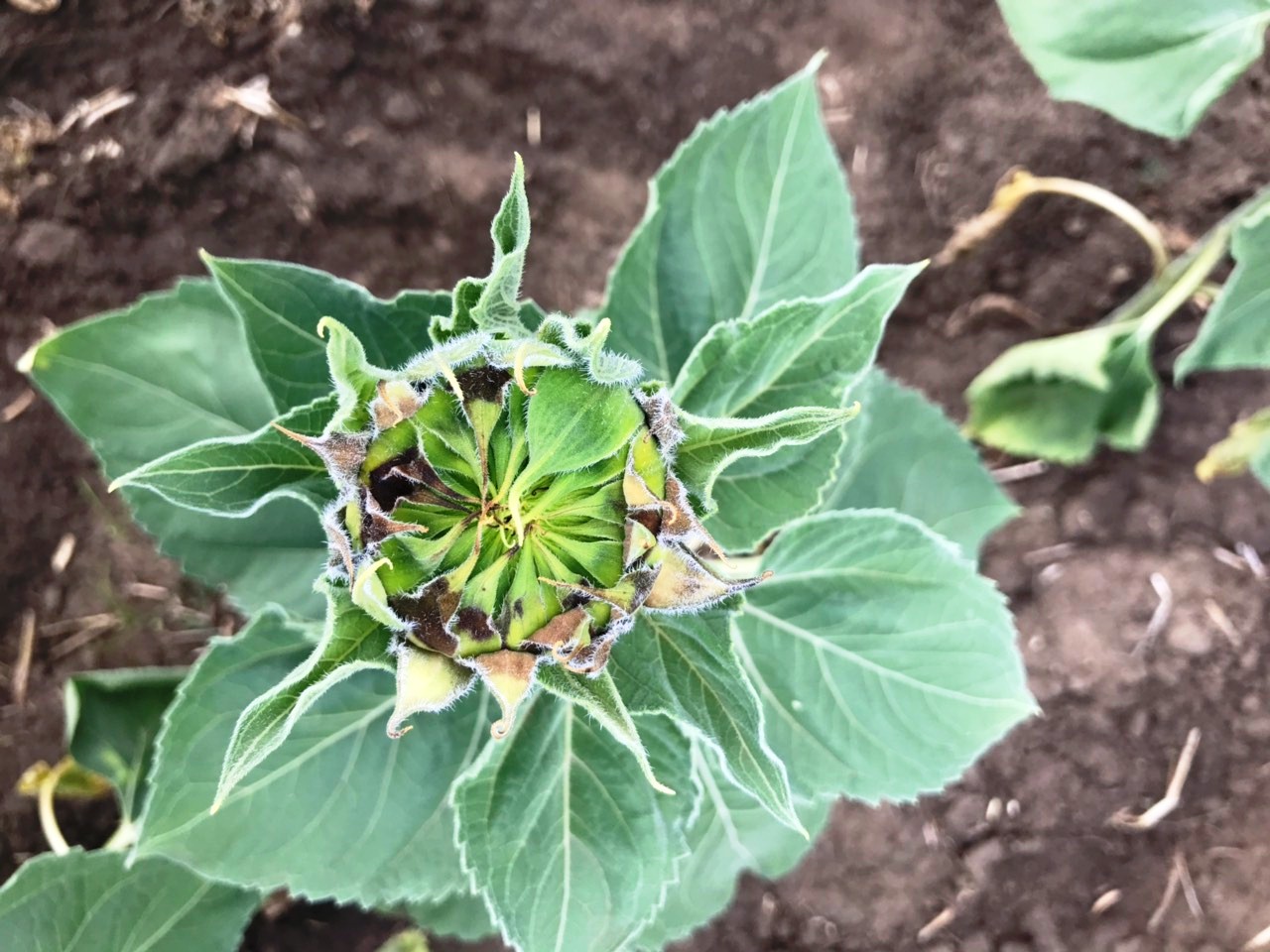
The death of a
sunflower bud due to extreme drought
(Ukraine, Odessa region, June 2019). Sunflower it is one from the most drought
tolerant crop but if water absent absolutely
even
sunflower dies. Climate change has already affected every farmer
on the planet. What role exact technologies will play in such conditions and
what to do of farmers? - we will consider in this article
Disappointing forecast
Agriculture is almost the
biggest victim of climate change, but at the same time, agriculture is one of
the main sources of greenhouse gases (it produces almost a quarter of their
emissions). It is understood that climate change has occurred mainly due to the
burning of oil, gas and coal. But agricultural production also significantly
effect to the situation on the Planet. The main carbon dioxide absorbers are
forest and soil. About 10 billion trees are cut down every year for using lands
for agricultural needs, and soils, due to improper processing, not only stop
absorbing CO2, but, on the contrary, produce greenhouse gases (due to
the abuse of fertilizers).
The irresponsible attitude
to natural resources has led to irreversible consequences. According to the FAO,
from 1880 to 2012, the increase in air temperature on the planet reached 0.85
°C.
But in some agricultural
regions, for example in Ukraine, warming is even faster - at the end of 2017,
the average annual temperature increased by 1.1 °C! Such changes have a stronger
effect to farmers. In many regions the number of days with high daytime air
temperatures (above +30 °C) has doubled. Such “heat waves” cause premature
ripening of crops and reduce their productivity. Moreover, in Ukraine today the
duration of active vegetation of plants has increased by an average of
+10 days.
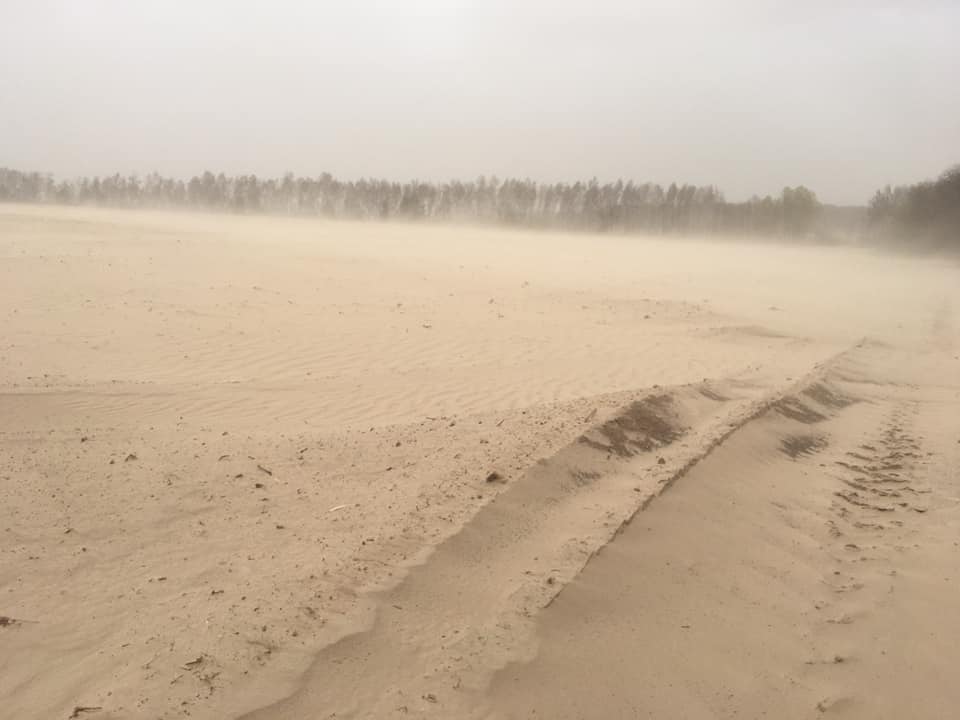
From
field to desert or how fields turn into desert... Field near Semenivka,
Chernihiv Region, Ukraine. Using of forest lines, water
keeping technologies,
CTF,
Strip Till and
professional consulting from
Agricultural Consulting Service
will help farmers
already now
At present
time, there is a clear
tendency to a decrease in the amount of precipitation in winter by 3-17%, as a
result, the risks of freezing and death of crops from prolonged occurrence of
ground ice crust and lack of moisture in the spring remain. And the number of
spring, summer and autumn droughts until 2030, as experts warn, may increase by 20-50%.
The weather signals this: at present there are dry winds atypical for them, and
in the spring and autumn months, hail is observed in different parts of the
country, which provokes damage of crops.
Already now it is possible
to know that the climatic conditions of the Southern Barrens will be signs of
dry subtropics. In this area, a significant decrease in the yield of canola
and spring barley is possible.
But the maximum risk level
for corn is: yield losses in the south regions can reach 20-30%, and in many
regions it is already impossible to get a corn yield.
What will help adapt crop
production to climate change?
-
Diversification of
crop production taking into account modern agroclimatic zoning of
territories
-
Business Consulting
from
Agricultural Consulting for Increased Efficiency
-
High-productivity
drought tolerant varieties and hybrid crops
-
In wheat production in continental climate it is possible the using of
facultative wheat varieties that give
more time for sowing of wheat
-
Growing drought
tolerant GMO crops
-
Growing more
drought tolerant traditional crops
-
The expansion of
sown areas for species and varieties of crops with a short growing
season, which will allow to obtain two or three yields of each crop
-
Increasing the
diversity of crops to strengthen the resistance of the agricultural
ecosystem to external stresses
-
The risks of
growing crops that require a lot of fresh water (e.g. rice)
-
Creation
of effective irrigation systems (in particular, drip)
-
Using
CTF,
Strip-Till, SDI and
innovations to increasing efficiency
of business
-
Reconstruction and
creation of new forest belts
-
The shift of the
sowing dates of spring grain crops to earlier, winter crops to later
dates will ensure the efficient use of moisture reserves in the soil by
crops
-
-
Creating a new
business and expanding an existing only by base of
technical audit of
conditions and taking into account climate change
-
Improving the
insurance system
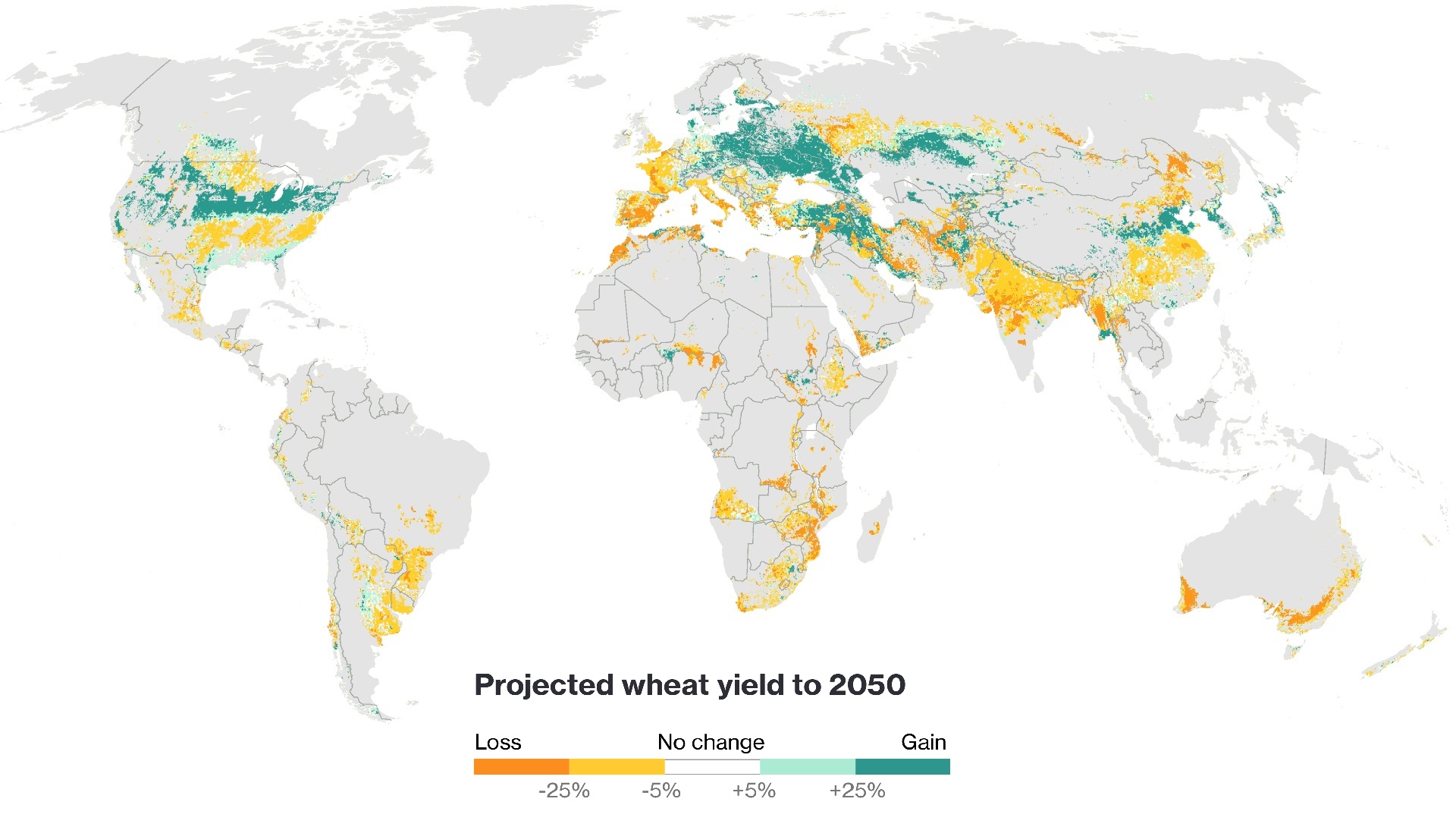
Prognosis map of changes of yields
of wheat for 2050 (CERES-wheat crop model based by HadGEM). It depends that
level of using of water, fertilizers and other recourses will changed too
(Source: International Food Policy Research Institute)
Horticulture and orchards, growing
vegetables, berries and viticulture - what doing?
-
Be prepared to
reduce the amount of fresh water available and droughts
-
Use rainwater
harvesting
-
Creation of fresh
water reserves
-
Desalination of sea
water
-
Increased risks of
frost, hurricanes, droughts and hail
-
-
Creating a new
business and expanding an existing only by base of
technical audit of
conditions and taking into account climate change
-
Drip irrigation,
underground drip irrigation SDI
-
Use of green energy
sources
-
Using
innovations to increasing efficiency
of business
-
Improving the
insurance system
-
Business consulting
from
Agricultural Consulting
for increasing efficiency

Not always
climate change it is drought! Cherry
orchard in snow (Uzbekistan, near Samarkand, 15 of April 2020). The climate
becomes more unstable and often frost and snow come instead of heat. Often snow
falls in winter and spring in those regions where it has never been, and in
those regions where there must be a lot of snow, no snowy winters are observed.
For example, the winter of 2019-2020 in Uzbekistan was snowy and colder than in
Ukraine and in the spring there was frost and snow and heavy rains. And in
Ukraine, during the winter, there was no snow and it was warmer, and in the
spring there was a drought. Usually should be the other way around
Measures to adapt to climate
change in livestock and poultry
-
Breeding in particular to improve heat tolerance
-
Possibility of breeding new bird species (eg guinea fowl) and more open
systems for production for the northern regions
-
Use
rainwater harvesting
-
Desalination of sea water
-
Use of
new drought-resistant varieties of forage crops and creation of
insurance stocks of forages and silage to prevent losses from drought
-
Increasing the area of natural and artificial pastures, the use of
sorghum and triticale in poultry
-
Optimization of the structure of hayfields and pastures to increase
their resistance to extreme weather conditions, providing shading
(natural or artificial)
-
Improving the system for monitoring of diseases, parasites and pests of
animals
-
Equipment and construction of premises for animals, with the use of
technologies and materials that protect against overheating and have
increased resistance to natural disasters
-
-
Creating a new
business
and
expanding an existing only by base of
technical audit of conditions and
taking into account climate change
-
Creating an effective insurance system to minimize financial losses from
adverse weather conditions
-
Using
innovations to increasing efficiency of
business
-
Business consulting
from
Agricultural Consulting for
increasing efficiency
-

More difficult poultry business at drought
conditions and new birds species (e.g. guinea fowl) and more open systems
for production for the northern regions
Aquaculture and
Climate Change
-
Increased role of aquaculture in global food production
-
Should
be prepared to reduce the amount of available fresh water, droughts and
reduce river flows, shallowing
-
Creating fresh water reserves
-
Increase in evaporation and salinity
-
Rising
water temperature, in some cases the need for cooling
-
Increased risks of flooding, a sharp increase in water levels and
flushing of dams
-
Improving the effectiveness of RAS and offshore aquaculture
-
-
Use of
GMO species
-
Creating a new
business
and
expanding an existing only by base of
technical audit of conditions and
taking into account climate change
-
Using
innovations to increasing efficiency of
aquaculture
-
Use of
aquaponics in freshwater aquaculture
-
Improving the insurance system
-
Business consulting
from
Agricultural Consulting for
increasing efficiency

Using of RAS and sea offshore
aquaculture give possibility improving the effectiveness of investments - fish
and water products growing it is possible in any palace that present water
Greenhouse business and
climate change
-
Increasing the role
of the
greenhouse business in world food
production
-
Should be prepared
to reduce the amount of fresh water available, droughts
-
Using rainwater
harvesting
-
Increased hail
risks
-
Desalination of sea
water
-
Use of cooling
-
The use of safety
nets, sun protection and solar panels to generate electricity
-
-
Use of alternative
energy sources
-
-
Creating a new
business
business and expanding an existing only by base of
technical audit of conditions and
taking into account climate change
-
Using
innovations to increasing efficiency of
indoor and greenhouses business
-
Improved insurance
system
-
Business consulting
from
Agricultural Consulting for
increasing efficiency
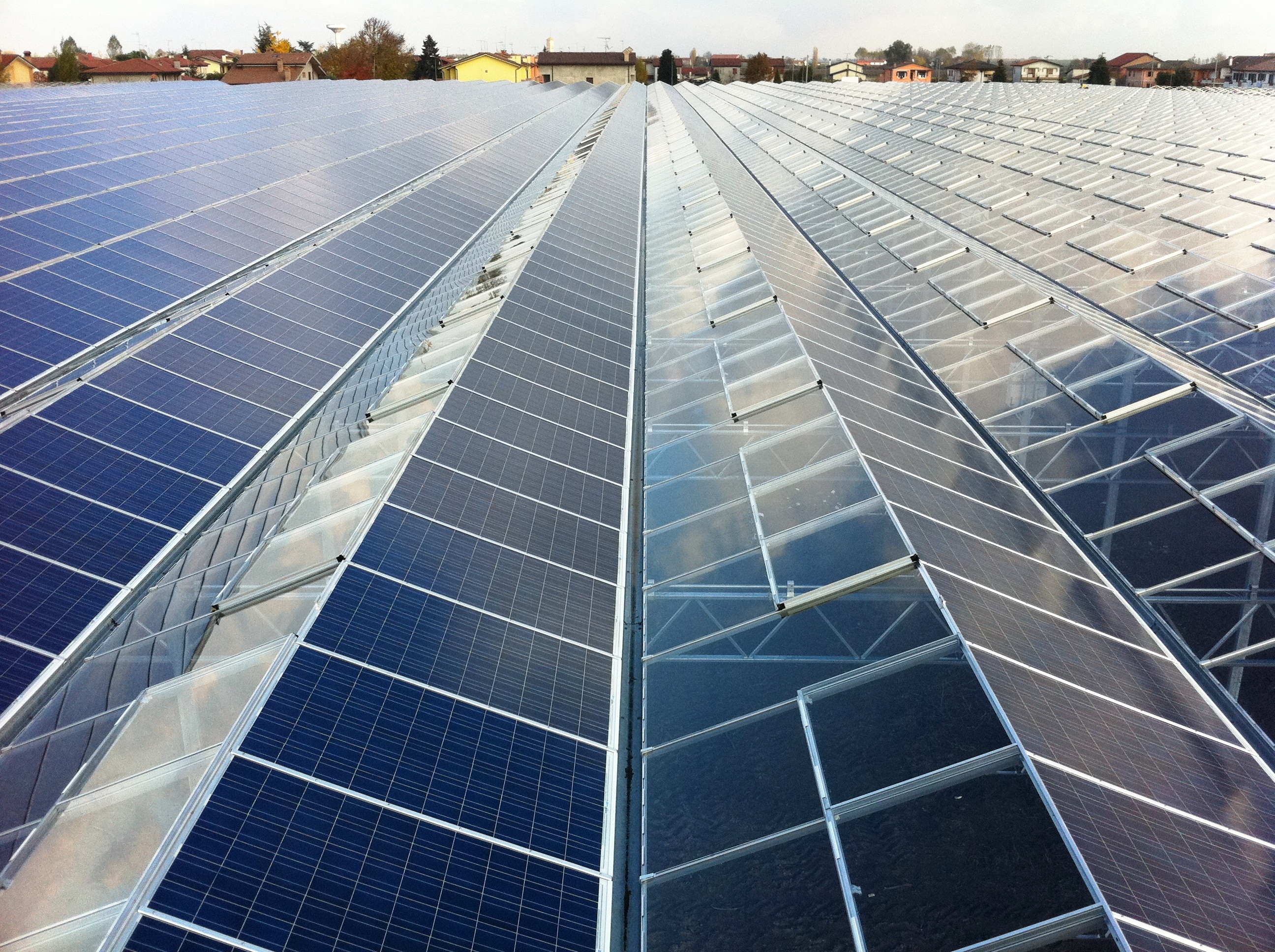
Greenhouses with solar
panels it is good decision for hot climate
What are the
main directions of increasing of business competitiveness using new innovative
technologies during climate change?
1. Management of
equipment and agricultural machinery:
-
Lower
fuel, energy and operational and financial costs
-
The
best management of machinery and equipment and technological operations
using innovations
-
A
decrease in fuel consumption will mean that less carbon dioxide is
produced, and this in turn affects the climate
-
Optimization of the application of nitrogen fertilizers will help not
only increase the efficiency of the payback of financial resources
invested in the purchase and use of fertilizers, but also reduce the
amount of nitrous oxide released from the soil into the atmosphere
-
By
identifying and correcting structural changes in the soil and increasing
the humus content through the use of modern technologies (e.g.
CTF and
Strip-Till), crop yields can be
optimized and resource utilization maximized
-
Precession technologies to reduce
resource consumption and wastes production
-
Increased productivity can reduce greenhouse gas emissions per kg of
grain, milk or meat produced
-
Precession technologies allows farmers
to be better prepared for climate change, for example, through more
efficient use of water or improving soil structure
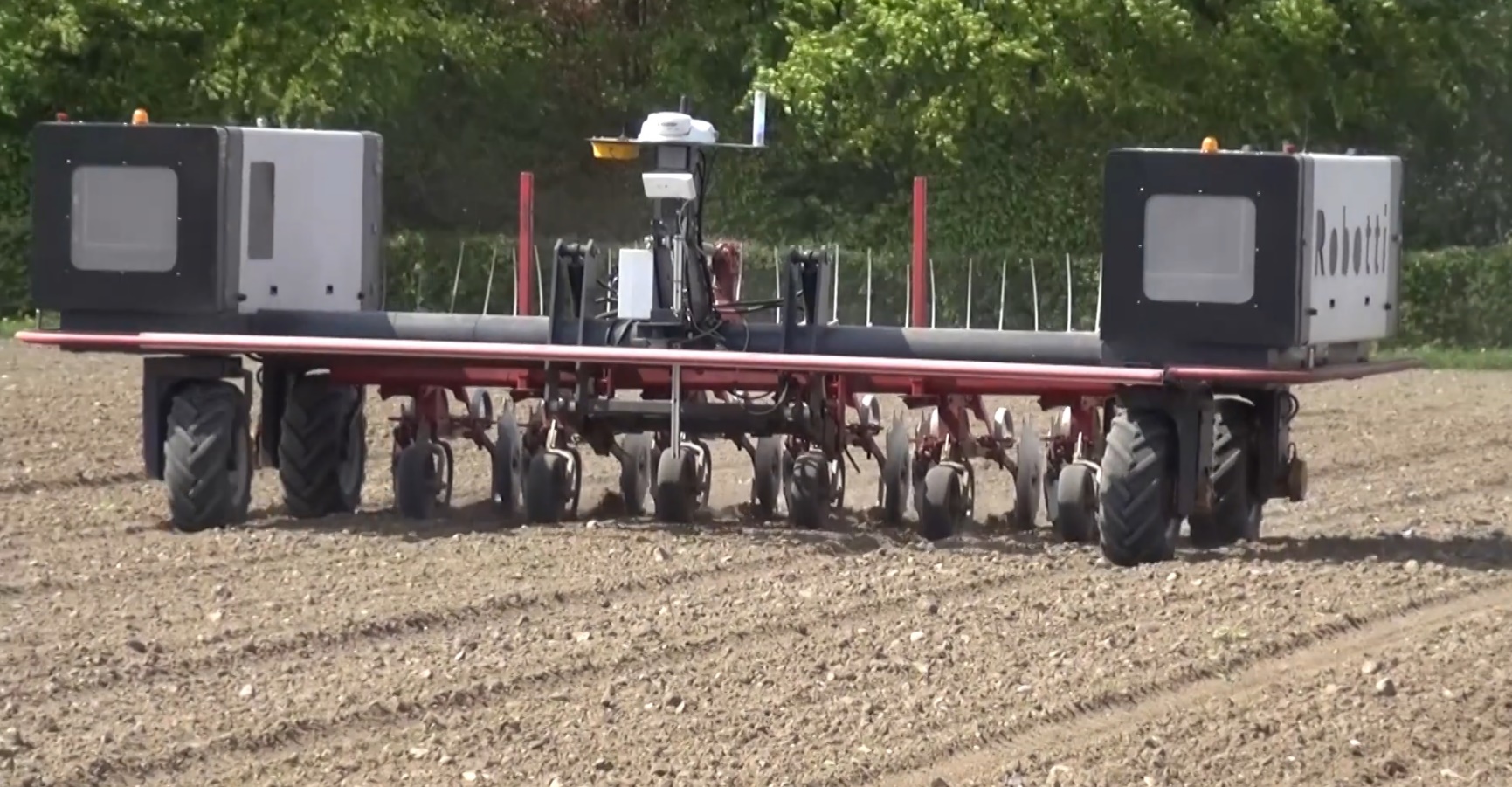
Changing
conditions in agricultural markets are also changing traditional approaches to
agricultural crops production. For example,
sugar beets are one of those crops where
farmers spend huge amounts of money on the purchase of pesticides, because to
get a high sugar yield, you need to use at least 5-7 sprayings with herbicides.
But modern technologies does not stand still and a new direction in the
production of
sugar beets and organic farming is the use of
mechanical destruction of weeds using robots (Robotti),
which allows you to completely abandon the use of herbicides and save a lot of
money
2. Management of
variations and field agronomy:
-
Mapping
the soil at fields. In most fields, there are differences in the type
and structure of soil, in quantitative indicators of the content of
plant nutrients, water and the availability of nutrients. There is
equipment and software to compare these changes and sow seeds or apply
fertilizers accordingly. These technologies are more aimed at reducing
the cost of resources and significantly enough reduce the amount of
resources and finances used to produce a unit of production
-
Yield
mapping shows the change in yield within the field and can be used to
study low-yield areas and to change fertilizer application rates in
proportion to the nutrient intake of crops
-
Sensory
measurement of plant density and level of biomass development - assesses
the biological properties and the total biological mass of the crop. On
wheat, this can be used to change the amount of nitrogen fertilizer
applied when the fertilizer spreader is moving
3. Other examples of the
use of modern technologies:
-
Decision support systems, for example, systems for recording the
effectiveness and financial value of various technological operations,
for example, different spraying dates or different doses of pesticides
4. For livestock and
poultry
-
The use
of biometric sensors for online monitoring of the state of animals and
birds is very important for increasing the productivity of the
agricultural business
-
Modern
diagnostic methods, for example, CT can increase the accuracy of
assessing the composition and muscle mass of farm animals during their
breeding
-
Automatic
feeding systems can provide feed rations with exactly the right amount
of ingredients and create any mixes for a specific animal population
-
Automatic
monitoring of diseases, for example, the number of helminth eggs, allows
you to decide whether to use anthelmintics for stable control of
parasites in sheep and allows you to prevent epidemics and mass death,
and makes it possible to localize the burning of diseases at the very
beginning
-
It also allows
to obtain higher quality livestock products (for example, automatic
control of somatic cells in milk, with switching of flows of "healthy"
and "dirty" milk)
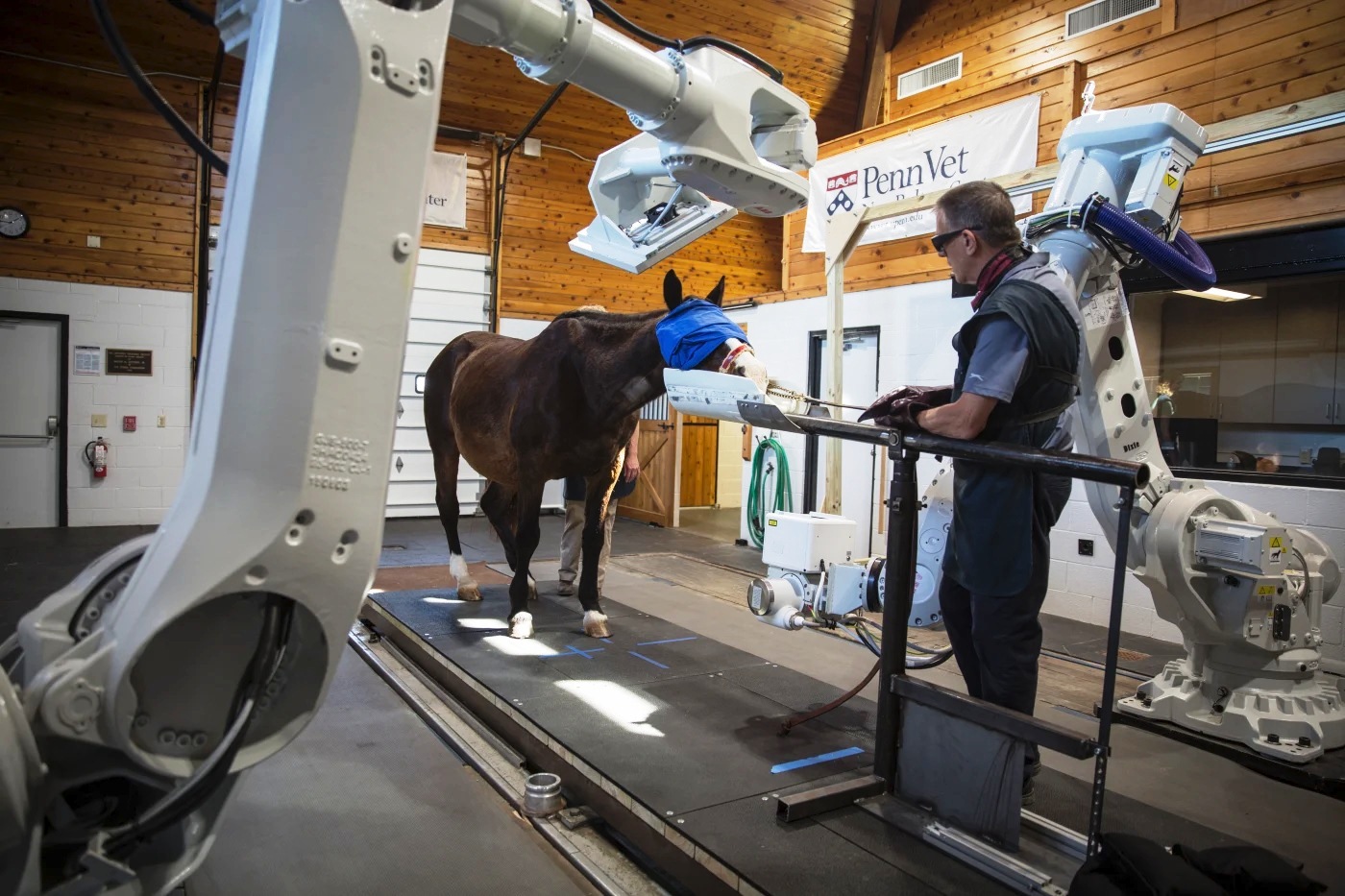
The New Bolton
Department of the University of Pennsylvania is veterinary clinic to use a
robotic computed tomography scanner for diagnosis (© Courtesy, Steven
Minicola, University of Pennsylvania)
5. For
horticulture and fruits and berries
production:
-
Scanning
and image processing and tracking technology have been
successfully applied to soil tillage equipment to improve
mechanical control of weeds between rows in orchards
-
Decision
support systems and modern sensors can help predict outbreaks of
pests and diseases, predict the maturity or make recommendations
on the use of irrigation water and fertilizers
6. For
indoor and greenhouses:
-
Fully
automated computer-controlled greenhouses so that you can
precisely control the air environment and other resources
-
More
efficient production systems through better utilization of
resources. Cost savings through optimization and more accurate
application of fertilizers for fertigation and other resources
-
Improving the condition of substrates and soil due to controlled
movement and reducing the number of technological operations
7. For
irrigation:
-
A drier
climate requires more water to produce of food, and the price of
water increases, so using automated irrigation systems will be
justified
-
The
importance of systems for the better use of water and
fertilizers for fertigation (for example, SDI) is increasing,
and their combination with modern soil cultivation technologies
(CTF) and methods of remote diagnostics (drones, ground and air
sensors for moisture and biomass development)
Are there
any risks?
-
Investments in equipment and machinery may not give a
significant returns, in the case of absence of modern software
and control systems
-
A slight
deviation may be present in the fields even when using modern
technology, or the deviation will not have a significant effect
on yield
-
Operations can be performed with very good accuracy, but
financial gains and improvements may be small due to ignorance
of the management features of such technologies
-
Inadequate training or misunderstanding may mean that modern
technology is not being used effectively. When using precision
farming, it is important to understand how the measurement is
made and which is the degree of accuracy. For example, spot or
strip treatment against pests, weeds or diseases may not be
effective if errors were made during the analysis of the samples
and during the diagnosis or the pest was not correctly
determined
-
Agronomic errors - if the sequence of operations is broken, or
something is done at the wrong time, then even using the latest
and modern technologies, one may not succeed
-
Estimating costs and benefits is crucial and, and in the absence
of accurate numbers, this can be intuitive
-
Exact
technology does not interfere with the farmer's experience, but
only contribute to the simplification of his work
-
How to
improve business profitability during climate change?
More
targeted use, especially of fertilizers and agrochemicals, means
that nutrients are used optimally, this can lead not only to lower
costs for fertilizers and agrochemicals, but also to a decrease in
nitrate content in food and emissions of oxides into the atmosphere.
Automatic
data loading in an easily manageable format reduces the time spent
on processing and recording information, and ultimately will allow
you to make more effective financial and managerial decisions.
Thus, the
use of precision agriculture and innovative technologies does not
remove risks, but significantly reduces their likelihood, and in a
changing climate it is crucial to increase the competitiveness and
profitability of the agricultural business!
Contact us for
consulting, creation, development and support of projects and creation of a business turnkey
Disclaimer
© Agricultural Consulting
Service. Technical audit of agribusiness. Agricultural business projects and
agricultural companies turnkey. Consulting services for agriculture,
aquaculture, natural resources, environment, safe energy in industry and
home construction. Increasing the
profitability of business, obtaining additional profits
|
